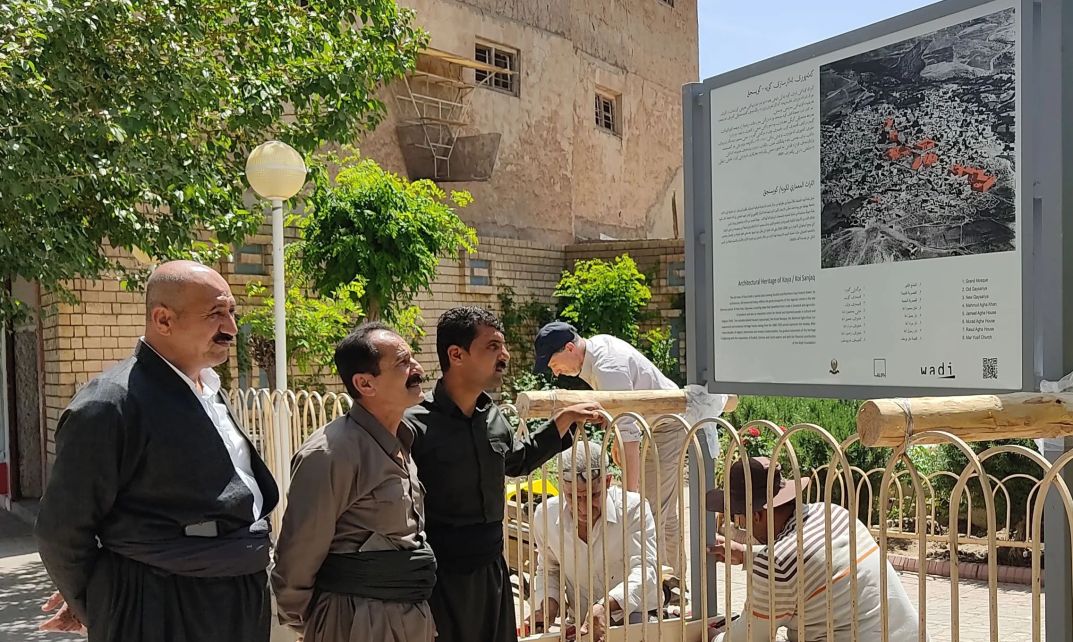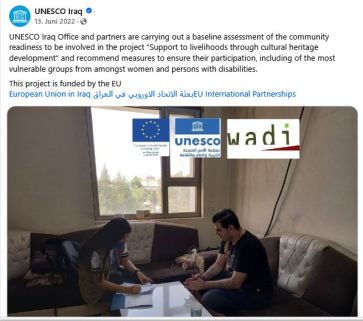Preservation and restoration of cultural heritage has long been part of Wadi’s work in Iraq
As the realization dawns about the loss of genuine cultural heritage artifacts, the essence of the past acquires fresh significance, transforming into cherished memories. This phenomenon is evident in northern Iraq, where numerous historic towns have witnessed extensive demolition or abandonment in recent years, juxtaposed with the explosive growth of modern cities. Suddenly, ‘snapshots of the past’ now adorn the walls of contemporary cafes.
WADI is now establishing a project dedicated to the preservation of ‘cultural heritage.’ Previously, this initiative had occupied a peripheral role within broader campaigns, but it now mirrors the growing enthusiasm among the people of northern Iraq for the meaningful conservation of historical artifacts and innovative forms of cultural remembrance. As with our other project areas, the overarching principle here is not to view ‘Heritage’ as a standalone domain, but rather as an integral part of a network within a socio-political context.
Repair and tourist development of a Zoroastrian sanctuary near Dohuk
An example is the ongoing restoration of the archaeological site known as ‘Shasteen,’ located within a popular recreational zone in Dohuk. While only the foundational walls of the mountain-side complex, originally housing a series of fire temples, have endured the passage of time, the site’s main attraction is a cave that once functioned as a temple, symbolizing the four elemental forces: fire, water, earth, and air. Access to this cave is facilitated through a tunnel expertly carved into the rock. However, it’s worth noting that the site’s previous visitor path has suffered from neglect, with certain sections now in disrepair.
In cooperation with the local antiquities administration, UNESCO and the International Labor Organization (IOL), the facility is now being restored for visitors. This project has multiple positive aspects. It requires a certain percentage of workers to be refugees from Syria, and there’s also a requirement to include women in the workforce.
The project is situated in a popular area for city outings, and it involves fixing a well-known man-made waterfall. The economic goals include helping employed refugees and making the local tourism more appealing. The area has abundant water and greenery especially for local standards, making it attractive for tourists from within Iraq. Additionally, the small park around the cave is a favorite romantic spot for couples to visit.
The project gains heightened significance when one considers that the ‘Islamic State’ deliberately targeted historical and cultural landmarks in the region as part of its campaign of destruction. This widespread destruction and displacement of people also equated to the erasure of collective memory, a tragic occurrence frequently witnessed in northern Iraq. Furthermore, it underscores the profound importance of the continued existence of Zoroastrian practitioners in the region, for whom the cave’s fire temple serves as an official place of worship. Notably, Zoroastrians are exempt from the small entrance fee. The preservation of this site also represents a commitment to the diverse religious history of the region.
Revitalization of a Khan in Koya

Installing an information billboard inside the old city of Koya
We have another project in its early stages, focused on revitalizing the Mahmud Agha Khan caravanserai in Koya. This historic structure is only partially preserved, and Koya is one of the many places in northern Iraq with extensive old town areas that are in advanced states of decay. Among them, there are notable buildings.
Emergency security measures have successfully halted further deterioration of the caravanserai. In collaboration with the University of Koya and the Antiquities Administration, we have documented three historical residential buildings as well. The next step is to revive traditional construction techniques, such as plaster kiln operations and stonemasonry, for the restoration work. This project also involves international cooperation, including partnerships with two Czech universities.
Restoration in the Erbil bazaar
Between 2012 and 2018, WADI in Erbil, in collaboration with the Department of Antiquities, local craftsmen, TU Berlin, and the German Archaeological Institute, conducted documentation and model restoration work on two 19th-century commercial buildings. These buildings have been under special protection ever since. Situated in the heart of the market, these structures house tailors specializing in traditional men’s costumes and a renowned tea house.
A decade ago, the concept of simultaneously preserving local culture and history through research and the restoration of archaeological sites and historical buildings, with the aim of boosting tourism, was groundbreaking in Kurdistan. After enduring prolonged economic and political conflicts, restoration efforts are now set to resume, with funding from the Federal Foreign Office’s cultural preservation program.
This year, we plan to document two more houses and execute model restorations as part of a training program for Iraqi and Kurdish students. This initiative is made possible through funding from the Gerda Henkel Foundation and in collaboration with the Heritage Conservation Center in Erbil, among other partners.





